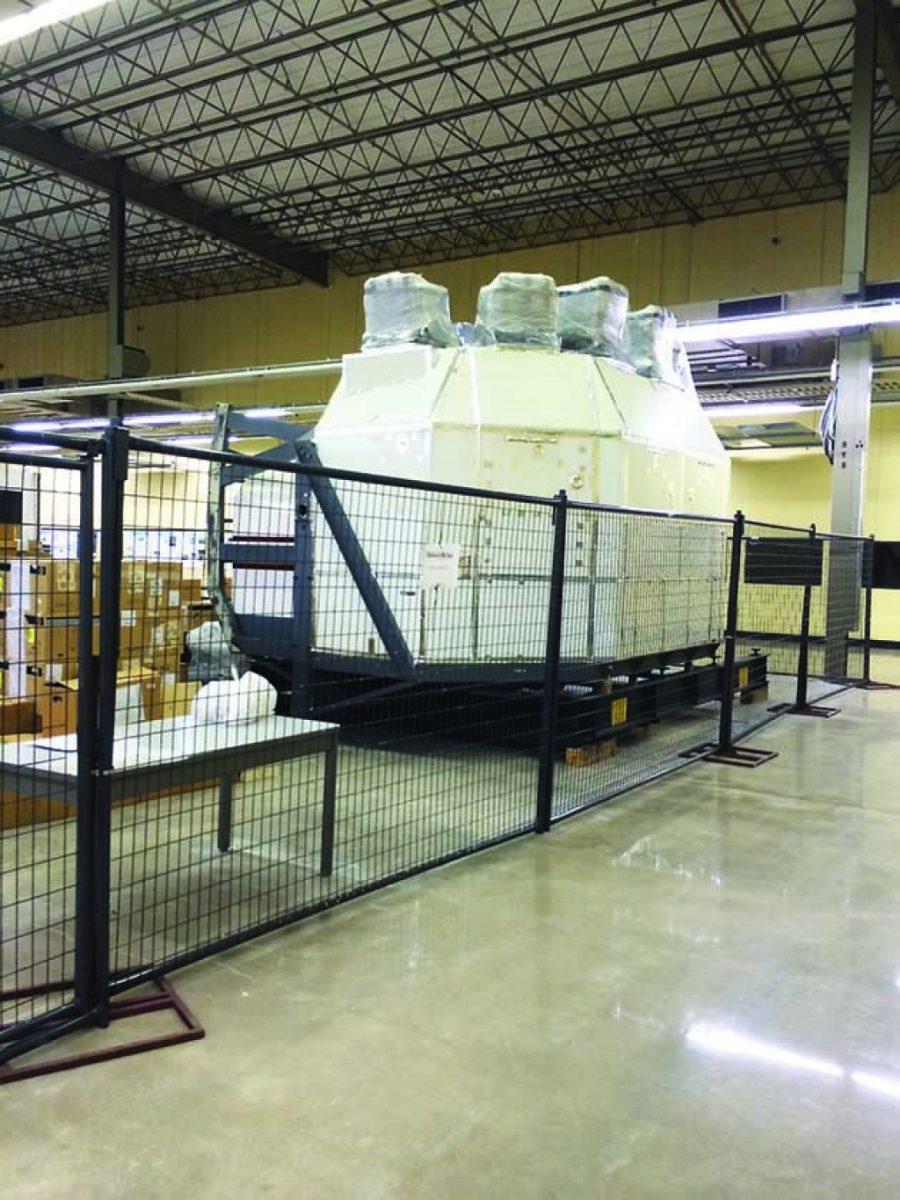It was supposed to open summer 2013, but Texas A&M has yet to unpack components of NASA’s retired shuttle simulator, let alone assemble it.
NASA and Texas A&M signed an agreement in 2011 to transfer ownership of the Shuttle Motion Simulator, SMS, to the University’s hands, but three years later the shuttle’s components still lay in storage. Building space and funding problems continue to stall the simulator’s assembly, and students who remember the original transfer announcements are left with questions of when, if ever, Texas A&M will open the simulator to the public.
Built in the late 1970s, the SMS trained 355 astronauts for 135 missions before being disassembled to ship to College Station. It is the only large piece of equipment from NASA to stay in Texas, according to the Texas A&M engineering website.
Before the agreement between NASA and Texas A&M, $500,000 was raised to disassemble and transport the SMS. Most of the money was raised by December 2011 when the project only lacked 20 percent of the necessary funding, but now that the simulator is here, Marilyn Martell, senior assistant vice chancellor for marketing and communications at the College of Engineering, estimates it will take longer than originally thought.
“At this time, it is estimated that between $250,000 to $500,000 will be required to refurbish and
place the simulator,” Martell said.
Some students are concerned about how this money is going to be raised, including Logan Watkins, chemical engineering junior.
“It will be very difficult because there are so many projects going on around campus along with a growing student body to fund,” Watkins said, in reference to the growth expected with the 25 by 25 Initiative.
Two years have passed since the SMS was delivered to College Station where it rests east of Highway 6 in Building 3400, said Elvis Dominguez, proctor for the building.
“It all requires a big chunk of power, and not what you get from a normal outlet,” Dominguez said. “We are talking about $500 per linear foot.”
Dominguez proctors the building voluntarily and in return uses the space to conduct research on nuclear reactors for A&M. However, when it is rebuilt, Martell said this building will not be the permanent resting place.
“We have not yet located the appropriate space large enough to hold this massive piece of machinery where the public can view it,” Martell said.
The simulator was shipped to A&M in two shipments, one in January and the next in June of 2012. The computers that control the simulator’s motion are almost half the size of the SMS itself and have their own separate storage. The flight deck is controlled by six hydraulic legs to simulate the shuttle’s motion. Most of the simulator’s power and control chords are the diameter of a silver dollar.
John Kochan, laboratory manager for the aerospace engineering department, was selected as one of the people to help in the rebuilding. The SMS was set to be ready and fully operational by summer 2013 but Kochan said there were funding setbacks once the parts arrived.
“It is disappointing that the simulator is not up and running,” Watkins said. “It would be a neat way to draw in the community to visit A&M’s campus as well as encourage a younger generation to pursue an education in that field.”
While the delay discourages some, Kochan offers a slightly different take.
“If the public was interested in seeing it set up as a public attraction, I would think there would be more public interest in supporting it,” Kochan said.
Kochan said it might be a good idea to advertise the SMS as an attraction to the Brazos Valley along with the George Bush Library.
“The best way to raise money would be to reach out to alumni of the aerospace engineers as well as the community since they will all benefit from it,” Watkins said.
For now, members of the public wishing to donate money to the Space Shuttle Simulator Fund can visit giving.tamu.edu.
Funds shortage has NASA simulator collecting dust
September 7, 2014
Photo by Eva Gilpin
The Shuttle Motion Simulator arrived at A&M in 2011 but lacks the funding to be assembled.
0
Donate to The Battalion
Your donation will support the student journalists of Texas A&M University - College Station. Your contribution will allow us to purchase equipment and cover our annual website hosting costs.
More to Discover








